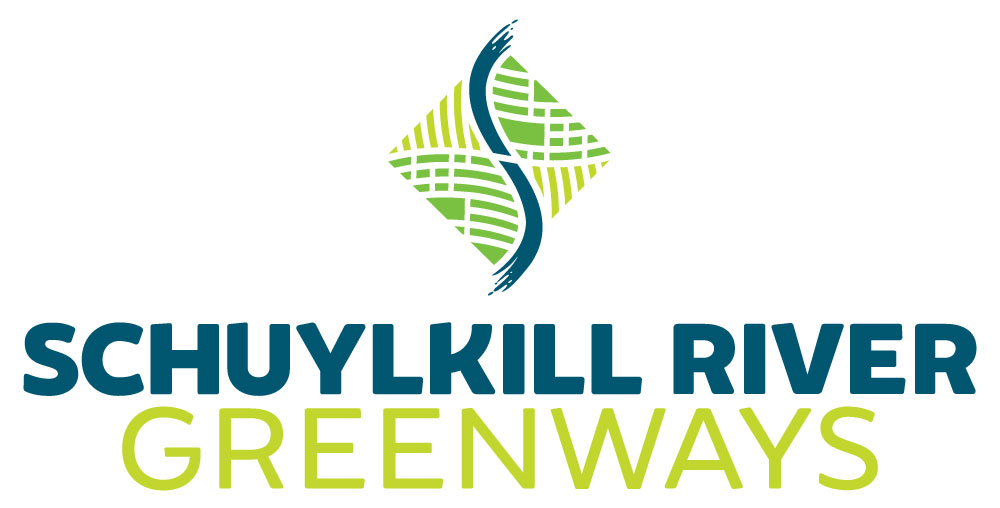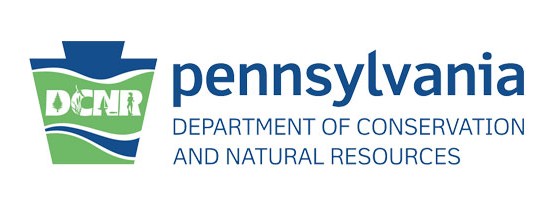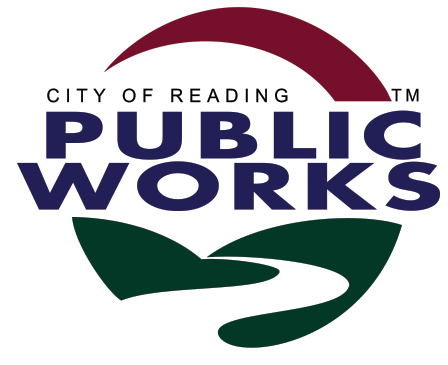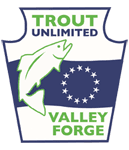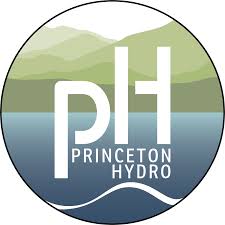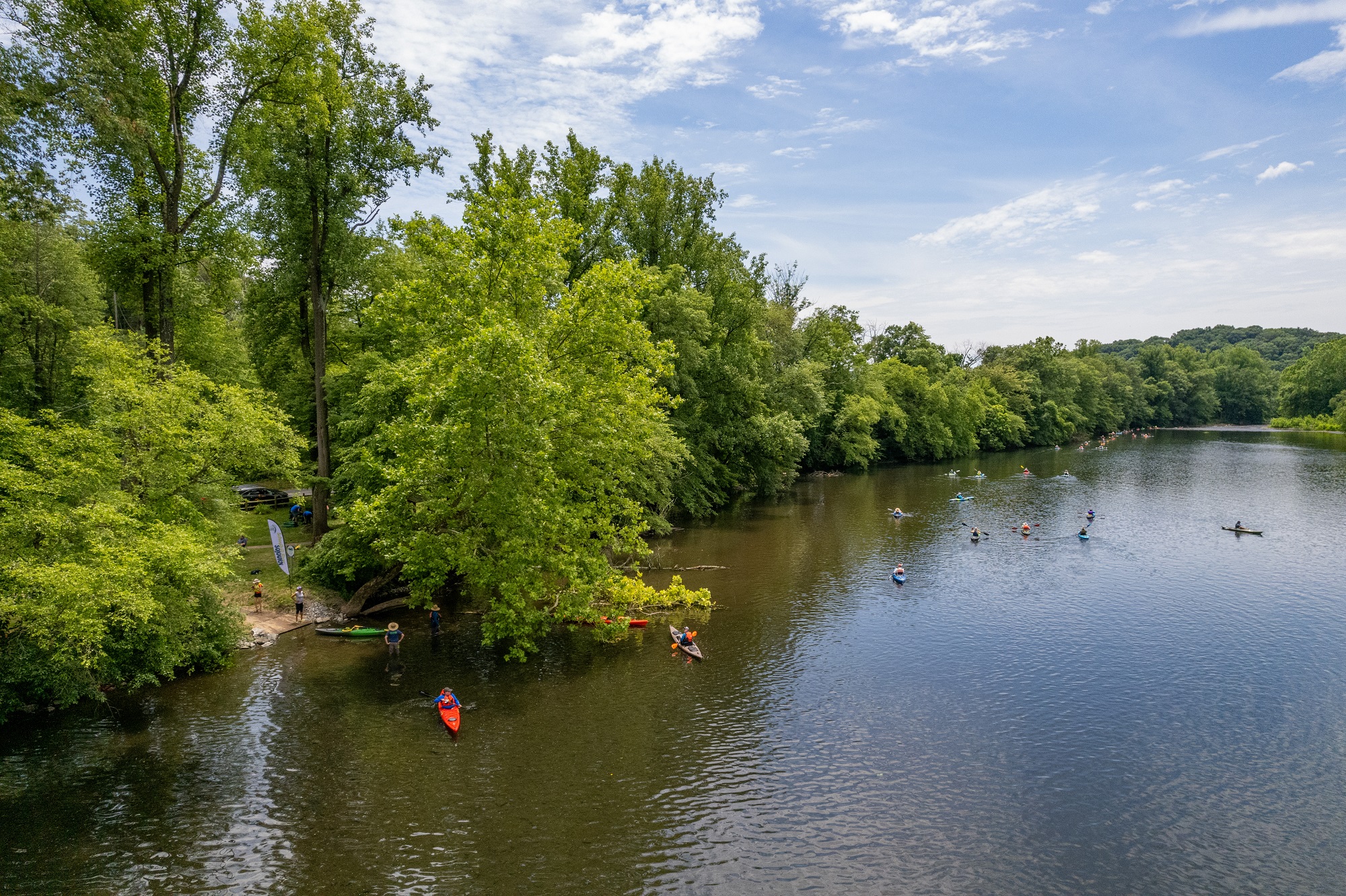
2025 Watershed Congress
Alvernia University
March 29, 2025
Photo Credit: Kara Foran
Updates for 2025
This years Watershed Congress has a new location, Alvernia University located in Reading, PA. For specific information, click on the links above. Information will be updated regularly.
View the 2025 Watershed Congress videos HERE!
The 2025 Watershed Congress is presented by the Delaware Riverkeeper Network and its partner organizations, as well as private individuals.
Current organization partners represent:
Alvernia University ⠂Berks Nature ⠂Center in the Park/Senior Environment Corps ⠂City of Reading Public Works ⠂Delaware Nature Society ⠂Friends of Heinz Refuge ⠂Friends of the Wissahickon ⠂Green Amendments for the Generations ⠂Green Valleys Watershed Association ⠂Montgomery County Conservation District ⠂Octoraro Native Plant Nursery ⠂Partnership for the Delaware Estuary ⠂Pennsylvania Department of Education ⠂Pennsylvania Sea Grant ⠂Schuylkill Action Network ⠂Schuylkill River Greenways NHA ⠂Stroud Water Research Center • Temple University ⠂Valley Forge Trout Unlimited
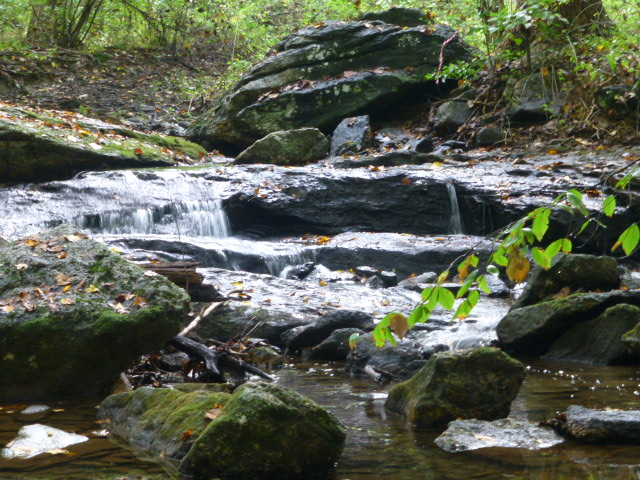
Since 1998, the Watershed Congress has advanced the best available information and techniques for protecting and restoring watersheds. The focus on networking across disciplines allows the Watershed Congress to meld science, policy, and practical applications into one program. As a result, the annual Watershed Congress is a highly anticipated event for people interested in understanding, protecting, and restoring their local streams.
Topics for this years presentations include information on the Perkiomen Mapping & Flood Mitigation Plan, the Angelica Creek Park and Watershed, Citizen Science, New Pennsylvania STEELS Education Standards, Crayfish of the Delaware River Watershed, Watershed Management for New Jersey’s Largest Lake, Partnership Between Water Quality Protection and Providing Food Security, Microplastics in the Delaware River Watershed, Preventing Plastic Sawdust Pollution, Snails of the Upper Delaware River, Warehouses, and Addressing the Problems of Salty Streams.
Sponsors
The 2025 Watershed Congress is being made possible in part by grants from the the Pennsylvania Department of Conservation and Natural Resources through the Schuylkill River Greenways National Heritage Area, as well as by donations from our Exceptional Value, High Quality and Cold Water Sponsors and Friends of the Congress.
2025 Lead Sponsors
Cold Water
Keynote
Perkiomen Mapping & Flood Mitigation Plan – Update
The Perkiomen Mapping & Flood Mitigation Plan began in earnest in mid-July 2024. We will summarize the progress of the planning effort to date and discuss the expectations of the final plan, which will be completed in mid-2025. The hydrologic model that is being developed will guide future planning as we all seek to find sustainable strategies to adapt to a changing climate.

Crystal Gilchrist
Project Director, Perkiomen Stormwater Initiative
Crystal Gilchrist is the Project Director of the Perkiomen Mapping and Flood Mitigation Project for Representative Joe Webster (D-150). She has over 30 years of experience as a planner and traffic engineer in Southeastern Pennsylvania. Her experience includes roles as a Transportation Planner for both Bucks and Montgomery Counties, Transportation Engineer for Pennoni Associates, Director of Planning and Development for Lower Providence Township in Montgomery County, Executive Director of Perkiomen Watershed Conservancy, and Environmental Project Manager for Stell Associates.

Shahjabin Alam (Juni), PE
Civil Group Manager, Herbert, Rowland & Grubic, Inc
Ms. Juni Alam is a Senior Project Manager at HRG’s King of Prussia office. She is currently assisting with several intermunicipal collaborations in southeastern Pennsylvania to improve water quality and reduce flooding at the watershed level. She also has wide-ranging experience in NPDES permitting and MS4 compliance, green stormwater infrastructure design, stream restoration, wetland mitigation, watershed modeling, and water quality analysis.
Schedule
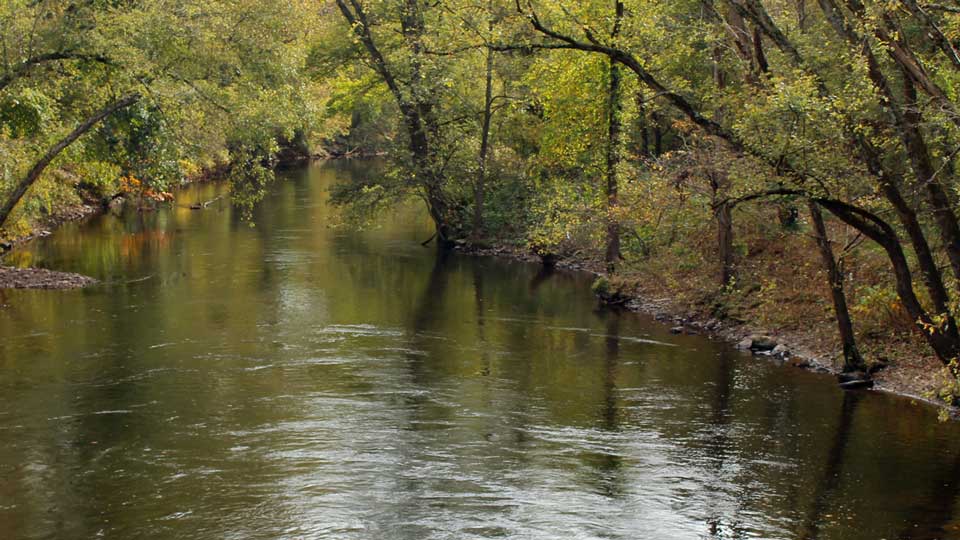
| 7:30 am – 8:30 am | Registration Check-in |
| 8:30 am – 9:00 am | Welcome and Opening Comments Bernardine Hall (BH) Lecture Hall 014 |
| 9:00 am – 10:00 am | Keynote Bernardine Hall (BH) Lecture Hall 014 |
| 10:15 am – 11:15 am | Breakout Sessions 1 |
| 11:30 am – 12:30 pm | Breakout Sessions 2 |
| 12:30 pm – 1:45 pm | Lunch BH common Area / Krestrel Cafe Area Lunch and Learn with Meghan Kelly |
| 2:00 pm – 3:00 pm | Breakout Sessions 3 |
| 3:10 pm – 3:30 pm | Closing Remarks |
Breakout Sessions
Breakout Sessions 1
A. Underutilized Plants for Riparian Buffers
Kevin Zuidervliet, Octoraro Native Plant Nursery
Room: BH Lecture Hall 014
Abstract
A diverse plant palette is essential for creating sustainable landscapes. While the woody plants we have traditionally used in riparian buffers remain critical to success, exploring a wider range of species can offer numerous benefits. By incorporating underutilized plants like Symphoricarpus albus (snowberry), and Catalpa speciosa (cigar tree), we can enhance biodiversity, improve water health, and provide habitat for wildlife. How we evaluate whether a plant is worth being incorporated into a planting can be a difficult decision. Factors like plant hardiness and resilience, growth habit, and ecological value should all be considered. This presentation will delve into the advantages of expanding our plant palette, how to select new species, and showcase specific species that deserve greater recognition.
B. Angelica Creek Park: Past & Present
Alicia Sprow, Alvernia University; Logan Buch, Alvernia University; Bethany Ayers, City of Reading – Public Works; David Osgood, Berks County Conservation District
Room: BH005
Abstract
This presentation will reflect on the lessons learned from a successful multi-community partner watershed restoration project and touch upon the resulting educational opportunities. The sequence of events that led to the decision to go from a Pond to Floodplain Park resulted from various stakeholder elements that needed to come together to make it happen. Post-construction, long-term monitoring was essential to help ensure project success, whereby stream and wetland health improved. This included some adaptive management to address human and environmental factors. Also important to the project’s success was identifying an operating entity that, in partnership with the municipality, would help steward the land to ensure proper management and oversight of the watershed. The success of this project continues to provide educational opportunities at all levels. A student-led project at the collegiate level will be discussed, focusing on a sustainability field-based assignment located within the Angelica Watershed. Overall, the Angelica project is one element of a broader watershed-level effort at stream restoration throughout the county. The ultimate aim is to work together to create connections among projects and how they collectively can work across the waterway network to maximize environmental benefits and water resource availability in a synergistic approach.
C. Citizen Science with the Senior Environment Corps at Center-In-The-Park
Robert Meyer and David Schogel, Senior Environment Corps at Center-In-The-Park Senior Center
Room: BH002
Abstract
The Senior Environment Corps (SEC) at Center-In-the-Park Senior Center is a group of citizen scientists that have been monitoring water quality of local Philadelphia streams for 25 years. We have utilized chemical testing using field kits, bacterial testing to determine E. coli levels, and, lately, macroinvertebrate analysis. This presentation shares our latest work on the Monoshone and Wissahickon Creeks, specifically on the impact of a stormwater outfall on the health of the Monoshone and the impact of effluent from the Ambler Wastewater Treatment Plant on the Wissahickon. The SEC has expanded their efforts into air quality monitoring in Northwest Philadelphia with the help of a grant from Philadelphia’s Office of Sustainability to purchase air monitoring equipment. Specifically, we are in the process of installing air monitors near the SEPTA Combined Heating and Power Plant in the Nicetown area in response to the concerns of residents over potential pollution emitted by the plant. Though this project is in the fledgling stages, we share our current findings in this presentation. Finally, the SEC has partnered with the Center of Excellence in Environmental Toxicology at Penn to aid in monitoring lead levels in soil throughout the Philadelphia area. Those results are also shared in this presentation.
D. The New Pennsylvania STEELS Education Standards and Real-World Science
Steve Mohapp, Stroud Water Research Center; Michelle Niedermeier, Pennsylvania Sea Grant; Tamara Peffer, Pennsylvania Department of Education
Room: BH008
Abstract
During this session, participants will learn about Pa. STEELS Standards and discuss opportunities for organizations to provide real-world environmental education experiences. The newly adopted standards emphasize students getting outdoors and investigating their local environment.
The speakers will discuss the creation and structure of the STEELS Standards and how the Meaningful Watershed Educational Experiences (MWEE) framework can help students meet these standards. Participants will also hear about how the Pennsylvania Environmental Literacy Network is working on statewide and local environmental education and literacy initiatives.
E. Keeping Old Maps Alive – Ruth Patrick, Revisited!
Jordan Good, CS Davidson, Inc.
Room: BH001
Abstract
During this session, participants will learn how Ruth Patrick’s landmark 1948 study of the Conestoga River basin was re-assembled for a modern audience. The speaker will provide a broad overview of free, readily available Geographic Information System (GIS) tools and digital map repositories. Attendees will receive a brief tutorial in online mapmaking, and learn how to apply the same techniques to their own historic maps and datasets; particularly as it relates to watershed monitoring.
Breakout Sessions 2
F. Crayfish of the Delaware Watershed
Nicholas Macelko, Neshaminy Watershed Association
Room: BH Lecture Hall 014
Abstract
Invasive crayfish are an emerging threat in the Delaware watershed. F. virilis is an invasive species of crayfish that is now established on the lower Delaware and is working its way towards the Allentown region. F. rusticus is another invasive crayfish that is established in the Saucon watershed and is working its way down to the Lehigh and potentially the Delaware river. These species have potential to impact any watershed along the Delaware that is not dammed, making documentation of our current crayfish and invertebrate populations an essential task for our watershed associations. Outside of the watershed associations citizen scientists can help by uploading crayfish sightings to inaturalist and imapinvasives. This presentation is also aimed at helping citizen scientists identify which crayfish characteristics are best to photograph in order for experts on inaturalist/imapinvasives to identify the species both native and invasive.
G. Angelica Creek Watershed – Tales of Hope and Heartbreak
Jill Kemp, Angelica Creek Watershed Association; Stanley Kemp, University of Baltimore; David Osgood, Berks County Conservation District, Brent Erb, Nolde Forest EE Center, Jennifer Stinson, Governor Mifflin High School, David George, Angelica Creek Watershed Association
Room: BH005
Abstract
Angelica Creek is a small but storied stream that empties into the Schuylkill River in Reading. In the past, there were periods when much of the land was cleared for development, agriculture, and charcoal production. At other times, effort was made to protect and restore the land. The Angelica Creek Watershed Association (ACWA) began in 2015 and has evolved and broadened with many facets of watershed protection. As our ten-year anniversary approaches, we hope to celebrate and share a few lessons learned with others interested in improving their own watershed:
1. From Pond to Stream – Repercussions of dam removal on Angelica Creek
2. Nolde Forest EE Center – Can a family of forward thinkers change the world?
3. The Tale of Rabbit Run – The continuing saga of a ‘once-dumpy’ school side stream
4. Sponge John and other Under-rated Organisms – Who knew?
5. ‘Pooling’ Data – Daily monitoring of Mayfly Sensor Station water quality data triggers a hunt and discovery of water contamination.
Despite successes and community support, protections for Angelica Creek remain somewhat elusive. Are all streams in Southeast Pennsylvania doomed to a cycle of slow degradation with current legal protections?
H. Microplastics in the Delaware River Watershed
Faran Savitz, PennEnvironment
Room: BH002
Abstract
Plastic pollution poses a significant threat to our water quality, our recreational enjoyment, and endangers local species and ecosystems. Sadly, outdoor enthusiasts throughout the Delaware River watershed, and especially along the Schuylkill, have come across a plastic litter when attempting to fish, boat, or hike.
Now there’s growing research showing that this visible plastic pollution may pose a more nefarious threat to our environment and public health: the threat of microplastics.
Our upcoming project involves testing waterways throughout the Delaware River Watershed, including the Schuylkill River and several of its tributaries, for microplastics. We’ll then use the results to educate the public and key stakeholders about the hazards posed by plastic and microplastic pollution in the basin, and offer common sense solutions to protect our local environment from these threats. We believe that by identifying microplastic pollution locally, we can build the investment of concerned citizens in helping to address this problem. This presentation would go through our results, methodology, recommendations, and what it means for the watershed.
I. Partnering to Protect Water Quality and Provide Food Security Simultaneously
Jake Summers, Martha’s Community Farm; Robert Pace, Penn State Master Watershed Stewards Program; Brian Vadino, Montgomery County Conservation District
Room: BH008
Abstract
Academic institutions, agencies and other entities have conducted research to quantify the benefits that riparian (streamside) forest buffers can provide toward managing stormwater runoff, improving water quality, enhancing wildlife habitat, and achieving other conservation related objectives. Conservation practitioners recognize the importance of collaborating with landowners to ensure that they (practitioners) also consider their (landowner) objectives for their property/organization.
In August 2021, Martha’s Community Farm, Penn State Master Watershed Stewards, and the Montgomery County Conservation District partnered to explore the feasibility of establishing a “food forest” along the Perkiomen Creek to help address both water quality related objectives and food security needs of the greater community. Bringing such a vision to fruition involved analyzing existing site conditions, evaluating program funding constraints, understanding plant species’ requirements, and understanding future maintenance needs. It also required ensuring quality assurance and control during installation, establishing an effective monitoring and maintenance program, and engaging the community to understand and help meet their needs.
Broad-based partnership efforts, aided by significant volunteer involvement during the design and installation phases of the project, resulted in the establishment of a one-acre food forest, consisting of 340 native trees and shrubs (several of which are edible) along Perkiomen Creek at Martha’s Community Farm in October 2022. The effort involved considerable effort in planning site design options, site preparation, selection of appropriate native species and suppliers to meet multiple project objectives, site irrigation, and securing considerable volunteer expertise for installation, protection, and monitoring. The forest offers an additional avenue for Martha’s Community Farm to contribute fresh produce to families experiencing food insecurity while achieving the project’s conservation objectives. The project also provides unique educational opportunities for a diverse audience.
Martha’s Choice Marketplace and Community Farm is the largest food pantry in Montgomery County, serving almost 20,000 individuals and delivering 1.5 million pounds of food every year. Their mission is to build community through access to healthy food. https://marthaschoicemarketplace.com/farm/
J. 20 Years of Watershed Management of New Jersey’s Largest Lake
Patrick Rose, Project Manager and Limnologist, Princeton Hydro, LLC; Ivy Babson, Project Manager and Environmental Scientist, Princeton Hydro, LLC
Room: BH001
Abstract
Lake Hopatcong is the largest lake in New Jersey and forms the headwaters of the Upper Musconetcong River Watershed. The lake spans two counties and four municipalities, resulting in the need for collaboration between stakeholders. A Watershed Restoration Plan was developed in 2006 and was recently updated to the EPA Nine Element format to better reflect current conditions. The Nine Element Watershed Implementation Plan has helped obtain funding from numerous State and Federal grants for the design and implementation of projects identified in the plan. This presentation will discuss the lessons learned from working with dedicated stakeholders including local environmental groups and communities. A variety of restoration projects involving bank stabilization, green infrastructure, and stormwater management will be highlighted as well as their sources of funding. In-lake data from the 30-year continuous database will also be presented to highlight how the lake has responded to reductions in nutrient loading.
Lunch and Learn
Behavior Change and Social Marketing for Environmental Stewardship
Meghan Kelly, Green Motivate
Room: BH005
Abstract
Is your organization interested in promoting sustainability behaviors, but not sure where to start? Have you already incorporated behavioral goals into your programs, but would like to achieve them more effectively? Bring your lunch and join Meghan Kelly from Green Motivate to discuss how to use behavioral science and social marketing to encourage your community to adopt new behaviors.
This interactive session will start with an overview of behavior change and social marketing, and then move into Q&A. Feel free to bring general questions, (such as how to select a behavior to focus on) as well as those specific to your organization’s programs, (such as how to conduct research to determine your audience’s barriers and benefits). This discussion will help you gain knowledge and skills to turn your behavioral goals into effective programs.
Breakout Sessions 3
K. On the Trails of Snails of the Upper Delaware River
Emma Guelzow, Project Manager, Academy of Natural Sciences
BH Lecture Hall 014
Abstract
Snails are an important part of the freshwater ecosystem. They play a significant role in nutrient cycling, and they are a food source for waterfowl, fish, and some mammals. When staff from the National Parks Service in the Upper Delaware River region discovered a large group of potentially invasive species on the banks of the river by their office, they realized that Gastropoda was one of the last classes to be researched on the Upper Delaware. In addition to invasive species, this area of the river and its ecosystem are heavily influenced by anthropogenic activity, such as dam releases and recreation. Thus, in collaboration with the Macroinvertebrates team in the Patrick Center for Environmental Research, an inventory study of the snail community was designed and executed to inform and create effective and responsible river management plans. It was shown that freshwater snail populations correlated with river temperature, and the presence of Japanese Mystery Snails, an invasive species, was confirmed.
L. Building a Coalition for Community Engagement and Sustainable Development
Fred Stine, Delaware Riverkeeper Network; Tom Bodolsky, Pequest Engineering Company; Peter Tran, Delaware Riverkeeper Network
Room: BH005
Abstract
Organizing your community is critical to stopping unsustainable, poorly sited and unwanted development. We will be focusing on warehouse development, but many of these skills and successful organizing techniques can be effective on other development threats. There are many tasks and actions that can be taken; from the getting your message out, to finding people with needed skill-sets, to maintaining momentum over the long-haul, fund-raising and many, many more. It’s not all commonsense and it takes a village – it wasn’t Michael Jordan alone that won 6 NBA championships.
An effective organizer brings them together and helps keep their eye on the prize. Co-presenter, Tom Bodolsky, led a community group for 4 years that stopped what would have been the largest warehouse in the east. Fred has worked for over 30 years as a community organizer with big and small wins. Come learn what can be effective at slowing down, enhancing or even stopping the develop project in your community and be prepared to share what has worked for you.
M. Addressing the Problem of Salty Streams: Community Science and Advocacy
Jennifer Latzgo and Mary Rooney, Little Lehigh Watershed Stewards, with David Bressler, Stroud Water Research Center
Room: BH002
Abstract
The amount of road salt being applied to roads in the US has increased twenty-fold in the past 40 years. This has caused a dramatic increase in the amount of salt in creeks and groundwater which threatens aquatic life, drinking water and infrastructure. In this presentation, we will talk about the causes of the increase of salt pollution, give an overview of its effects on stream health, and explain how a Pennsylvania watershed association performed a synoptic salt snapshot study to assess its effects locally. We will also discuss their ongoing experiences with developing strategies, protocols and materials for approaching local municipalities, businesses, etc. to advocate for best management practices for winter snow/ice removal.
Many individuals and groups have worked on this issue in the past, and the goal of this group is to work with allies to create a unified effort to bring about a state-wide reduction in road salt usage. They are particularly interested in feedback from session participants who would be willing to participate in a state-wide working group to address this issue.
N. It’s Everywhere, but You CAN Take a Big Bite Out of Toxic Microplastic Pollution in Your Community
Brian Thompson, Beyond Plastics National Advisory Board and Monmouth Beach Environmental Commissioner
Room: BH008
Abstract
Citizen action can stop contractors from polluting our air, ground and waterways when they table saw Trex-type manufactured lumber, vinyl siding, PVC piping, etc. Such sawing creates instant micro and nano plastics that are quickly blown away and thus ignored by anti-pollution ordinances and environmentalists. But in NJ, led by my town, several municipalities have recognized that “instant microplastics” are a serious threat to both our environmental and personal health and have already passed ordinances to require capture and disposal of those millions or more likely billions, even trillions of microplastics as of this writing.
This appears to be a first-in-the-nation law (based on a Google search) that can and should serve as a template to communities across the nation to reduce the amount of microplastics that are entering our food chains and every organ of our bodies with research still discovering their health effects.
This presentation will also address the false solutions that using plastic components such as decking, siding and piping offer to homeowners. There is insufficient recognition that plastics, whether micro or not, can no longer be treated as some sort of affordable “miracle” building material
O. Angelica Creek Park Field Trip
Join Larry Lloyd from Berks Nature for a guided tour of Angelica Creek Park, located right beside Alvernia University! Those interested in embarking on this educational adventure will meet at BH001 at 1:30 pm. This will cut in to your lunch time, so please keep that in mind as we break for lunch at 12:30 pm. The group will embark on foot to the park which will take approximately 10-15 minutes. The tour will last the entire time of the third breakout sessions and will meet back at Bernardine Hall for closing remarks.
Room: BH001 at 1:30 pm
Information
The Angelica Creek and its wooded watershed are treasured by local residents and attract anglers and birdwatchers from afar. The creek’s headwaters stem from hills near Knauers in Cumru Township, winding northeast for about six miles before joining the Schuylkill River just south of the City of Reading. In the first two breakout sessions of the Watershed Congress you will hear about the storied past of the Angelica Creek and lessons learned along the way. This field trip is perfect for you if you are looking to catch some fresh air, build on the breakout sessions, and see the results of a multi-community partner watershed restoration project. Additionally, 2025 is the 10-year anniversary of the Angelica Creek Watershed Association, a program of Berks Nature.
Watershed Congress Site:
Alvernia University
400 Saint Bernardine Street
Reading, PA 19607

